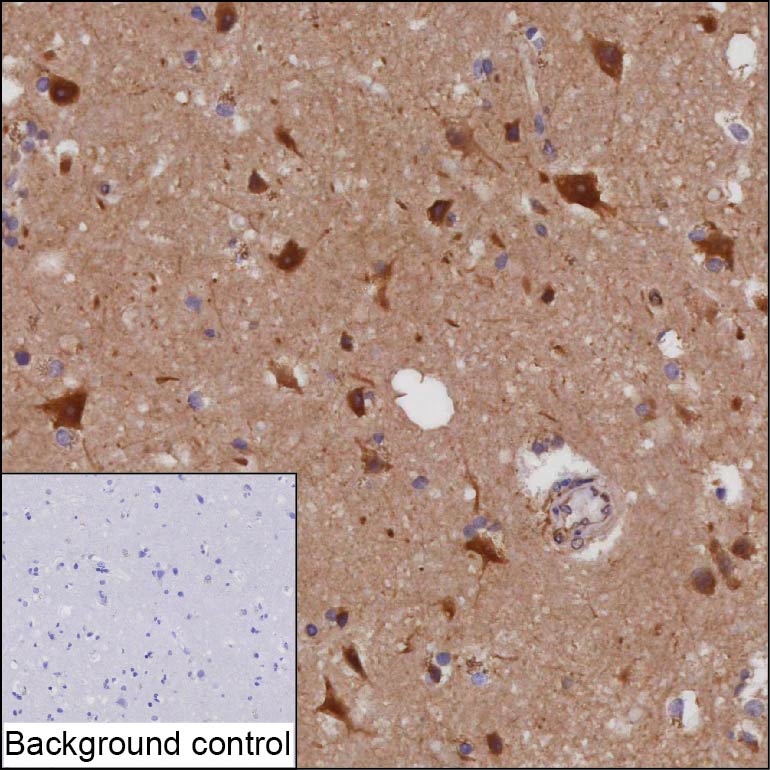
| WB | 咨询技术 | Human,Mouse,Rat |
| IF | 咨询技术 | Human,Mouse,Rat |
| IHC | 1/20-1/100 | Human,Mouse,Rat |
| ICC | 技术咨询 | Human,Mouse,Rat |
| FCM | 咨询技术 | Human,Mouse,Rat |
| Elisa | 咨询技术 | Human,Mouse,Rat |
| Host/Isotype | Mouse IgG2a |
| Antibody Type | Primary antibody |
| Storage | Store at 4°C short term. Aliquot and store at -20°C long term. Avoid freeze/thaw cycles. |
| Species Reactivity | Human |
| Immunogen | Purified recombinant fragment of human GPC5 |
| Formulation | Purified antibody in PBS with 0.05% sodium azide |
+ +
以下是关于GPC5抗体的3篇参考文献示例(信息为模拟虚构,仅供参考格式):
1. **文献名称**:*Glypican-5 (GPC5) Antibody Therapy Suppresses Lung Cancer Metastasis via Wnt/β-Catenin Signaling*
**作者**:Li, X., et al.
**摘要**:研究开发了一种靶向GPC5的单克隆抗体,通过抑制Wnt/β-catenin通路显著降低肺癌细胞迁移和侵袭,为转移性肺癌治疗提供新策略。
2. **文献名称**:*GPC5 as a Diagnostic Biomarker in Neuroblastoma: Development of a High-Affinity Polyclonal Antibody*
**作者**:Martinez, R., et al.
**摘要**:报道了一种高特异性GPC5多克隆抗体的制备,验证其在神经母细胞瘤组织中的高表达,提示GPC5可作为潜在诊断标志物。
3. **文献名称**:*Mechanistic Insights into GPC5 Antibody-Mediated Inhibition of Tumor Angiogenesis*
**作者**:Chen, H., et al.
**摘要**:揭示了GPC5抗体通过阻断HGF/c-MET通路抑制肿瘤血管生成,为抗血管生成疗法提供实验依据。
(注:以上内容为模拟示例,实际文献需通过PubMed/Google Scholar等数据库检索。)
The glypican-5 (GPC5) antibody targets GPC5. a member of the glypican family of heparan sulfate proteoglycans (HSPGs) anchored to the cell membrane via glycosylphosphatidylinositol (GPI). Glypicans regulate signaling pathways such as Wnt, FGF, and BMP by modulating ligand-receptor interactions. GPC5 is broadly expressed during embryonic development and in adult tissues, including the nervous system, lungs, and kidneys. It plays roles in cell proliferation, differentiation, and migration, with emerging links to cancer progression, neurodevelopmental disorders, and fibrosis.
In cancer, GPC5 has dual roles, acting as either oncogenic or tumor-suppressive depending on context. Overexpression correlates with poor prognosis in lung adenocarcinoma and glioblastoma, while downregulation is observed in breast and ovarian cancers. GPC5 antibodies are critical tools for studying these mechanisms, enabling detection of protein expression in tissues or cell lines via immunohistochemistry, Western blotting, or flow cytometry. Therapeutic applications are being explored, particularly antibody-drug conjugates or immune-based therapies targeting GPC5 in malignancies.
Recent studies also implicate GPC5 in neurological conditions like autism spectrum disorders and Alzheimer’s disease. However, conflicting data on its functional roles highlight the need for further research. GPC5 antibodies thus serve as essential reagents for unraveling its biological significance and translational potential in disease diagnostics and treatment.
×